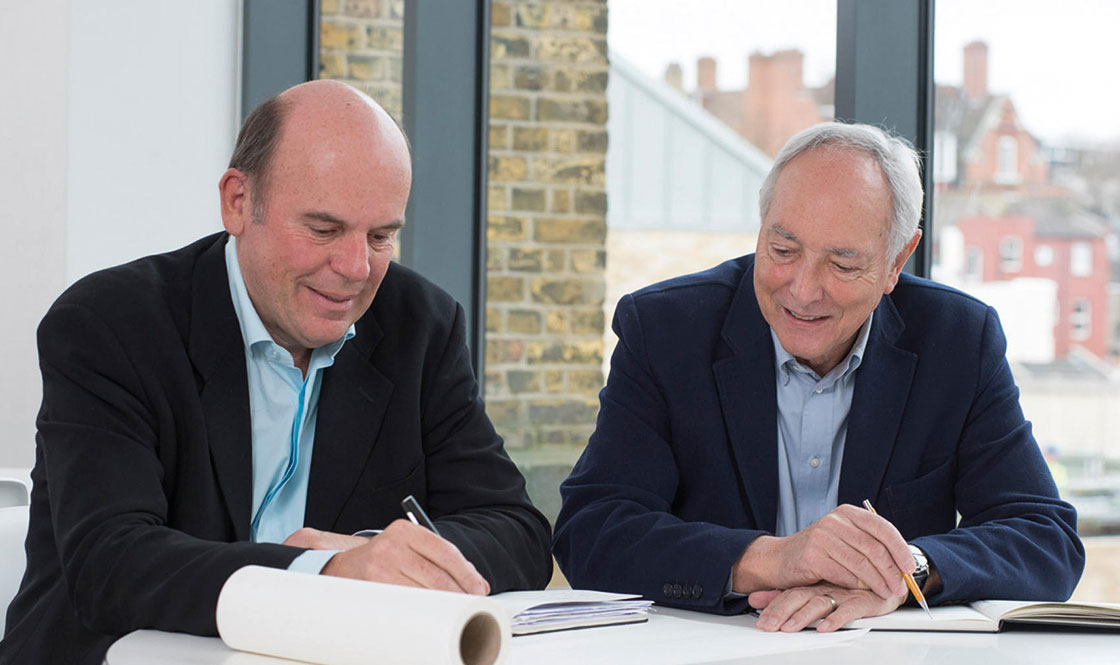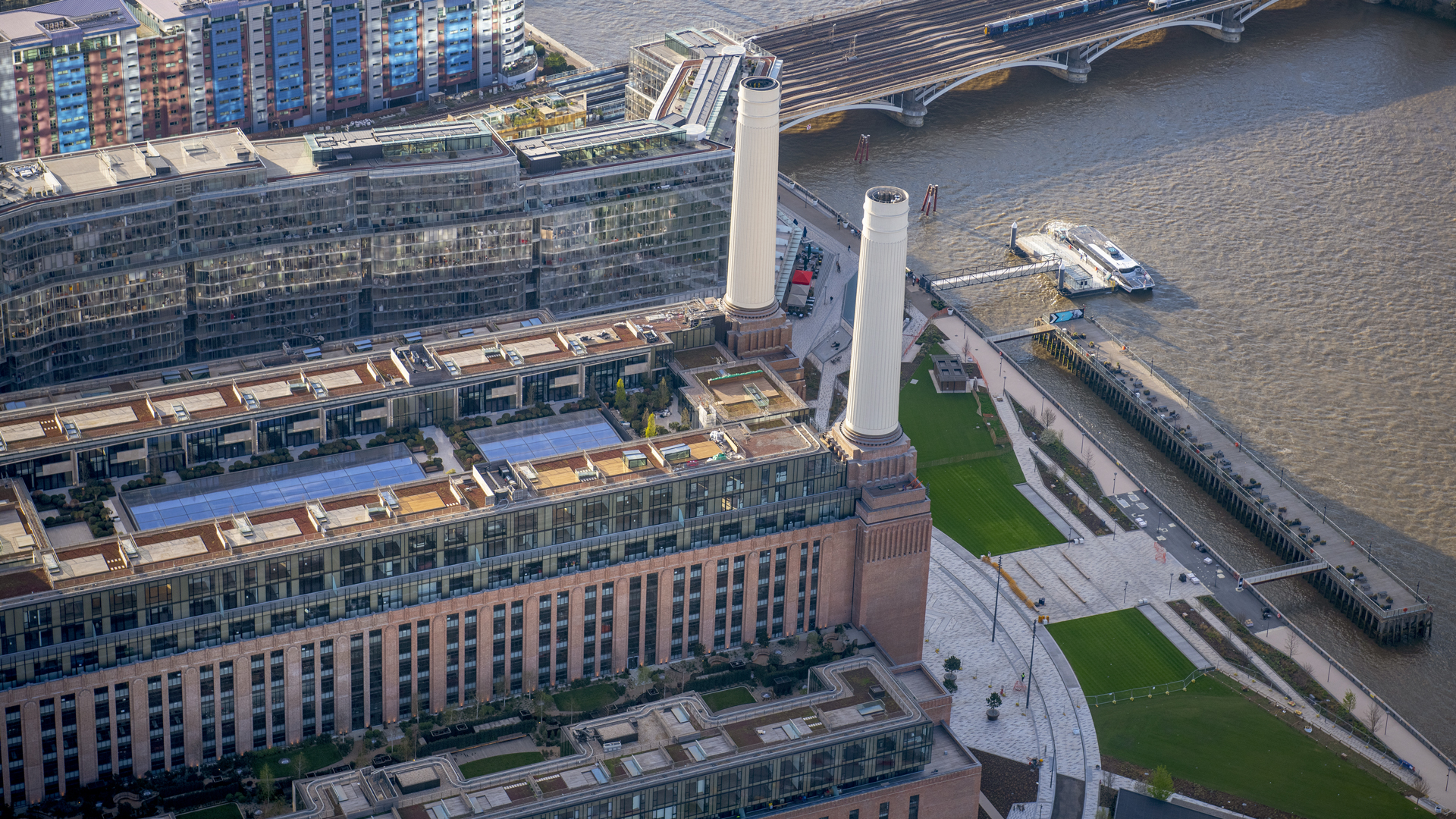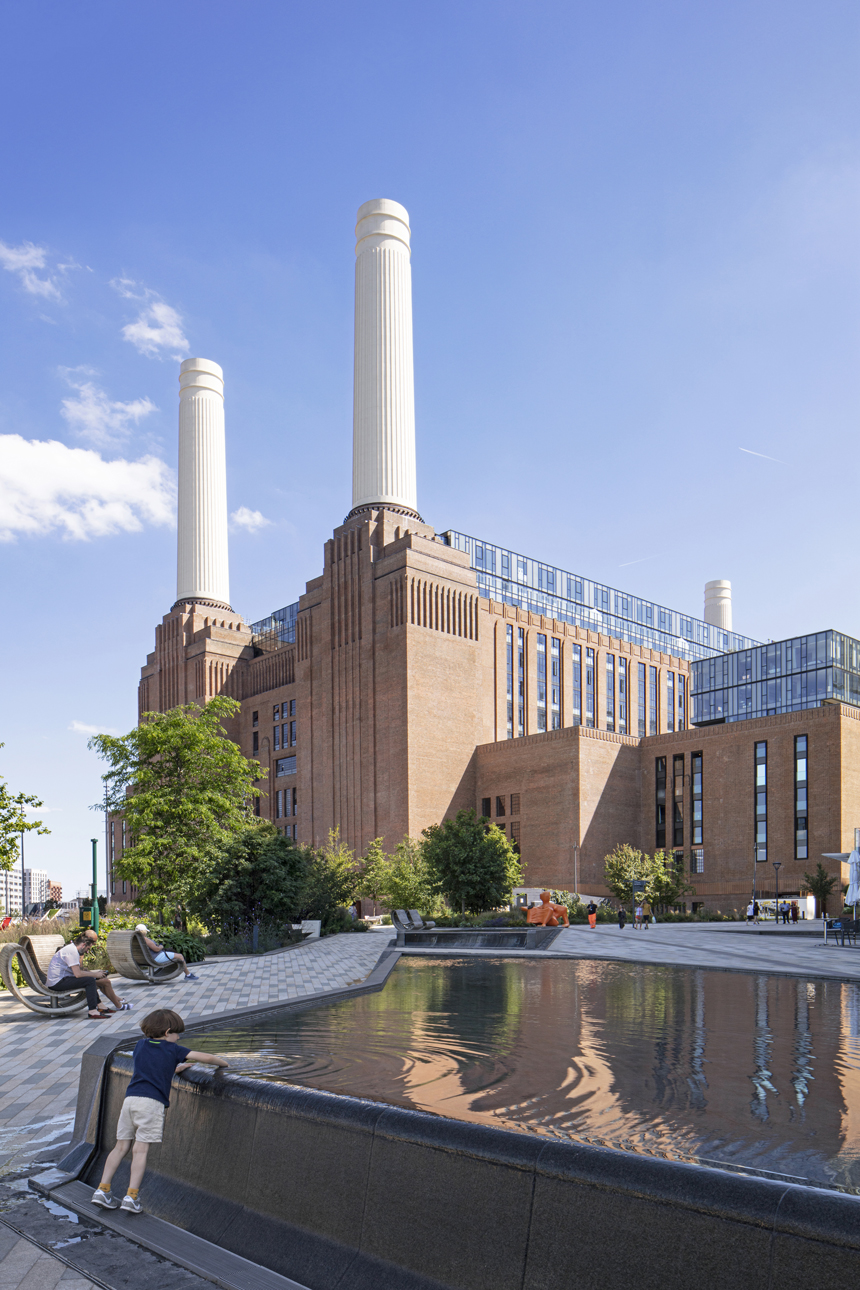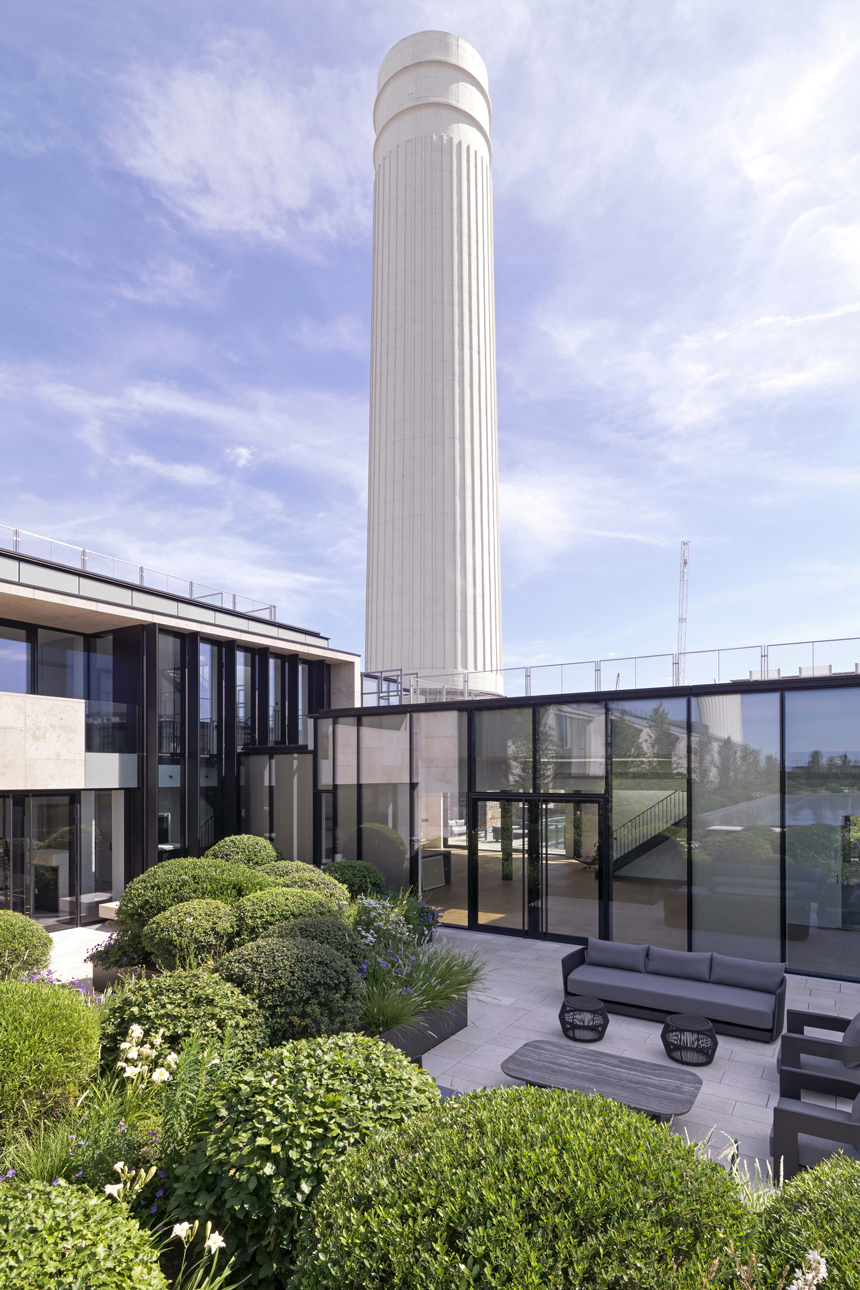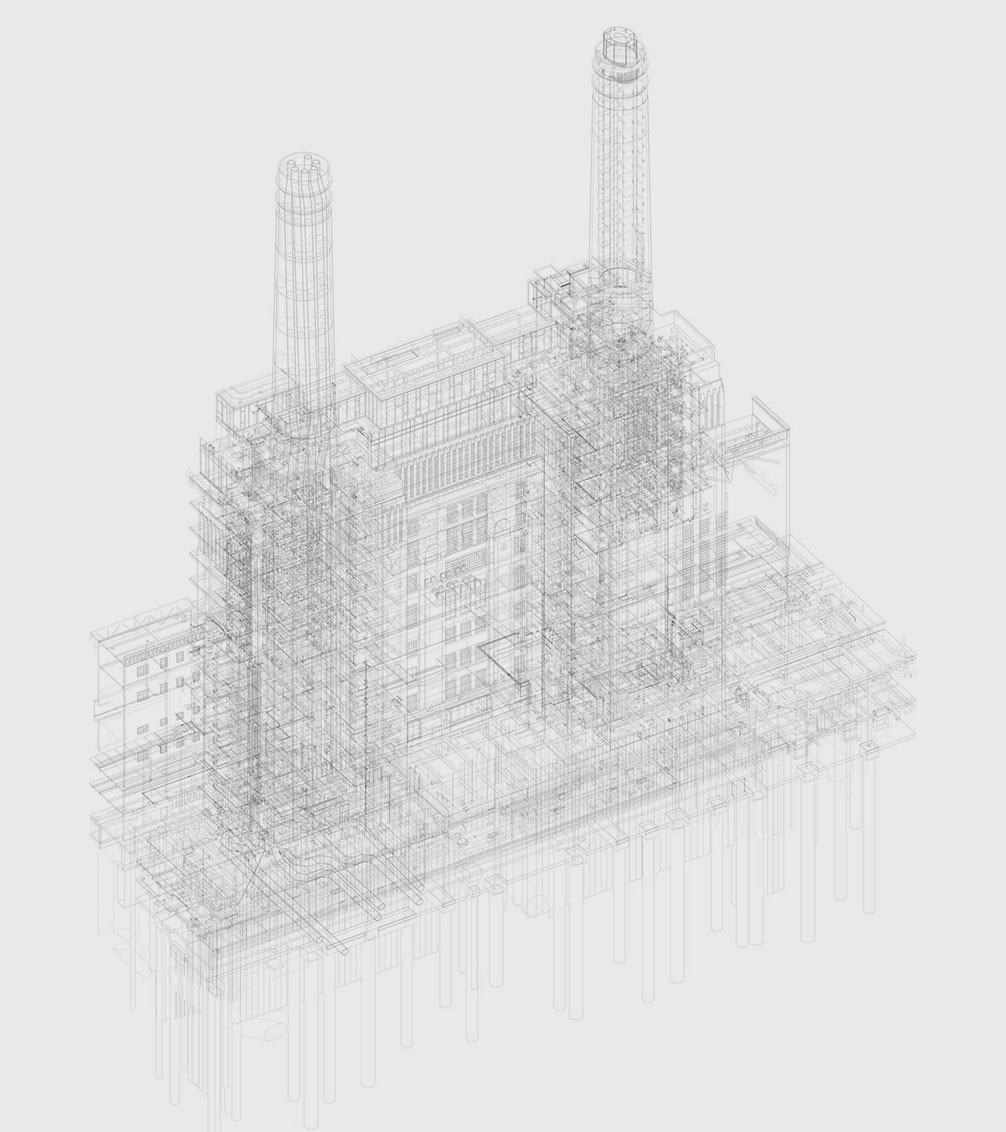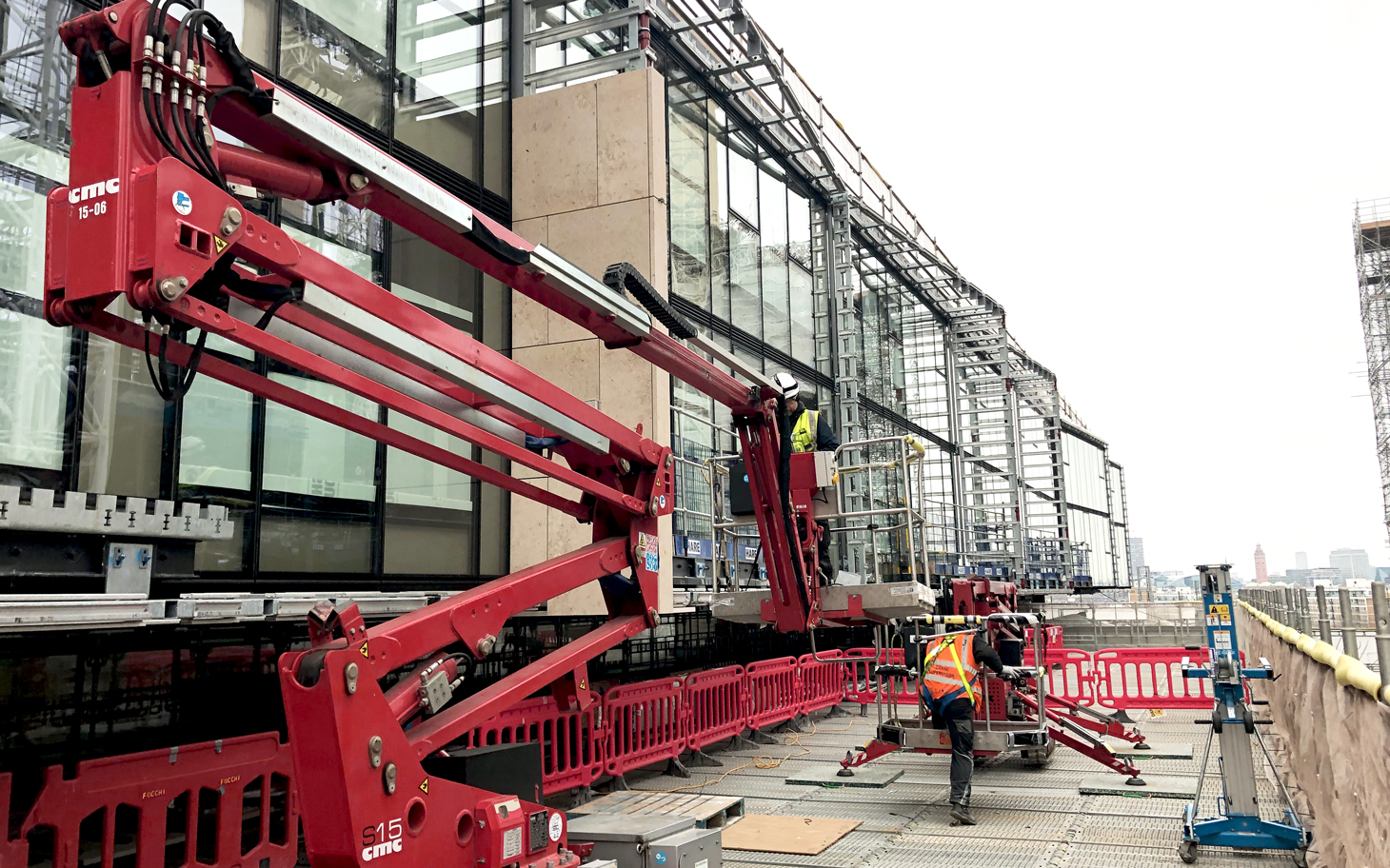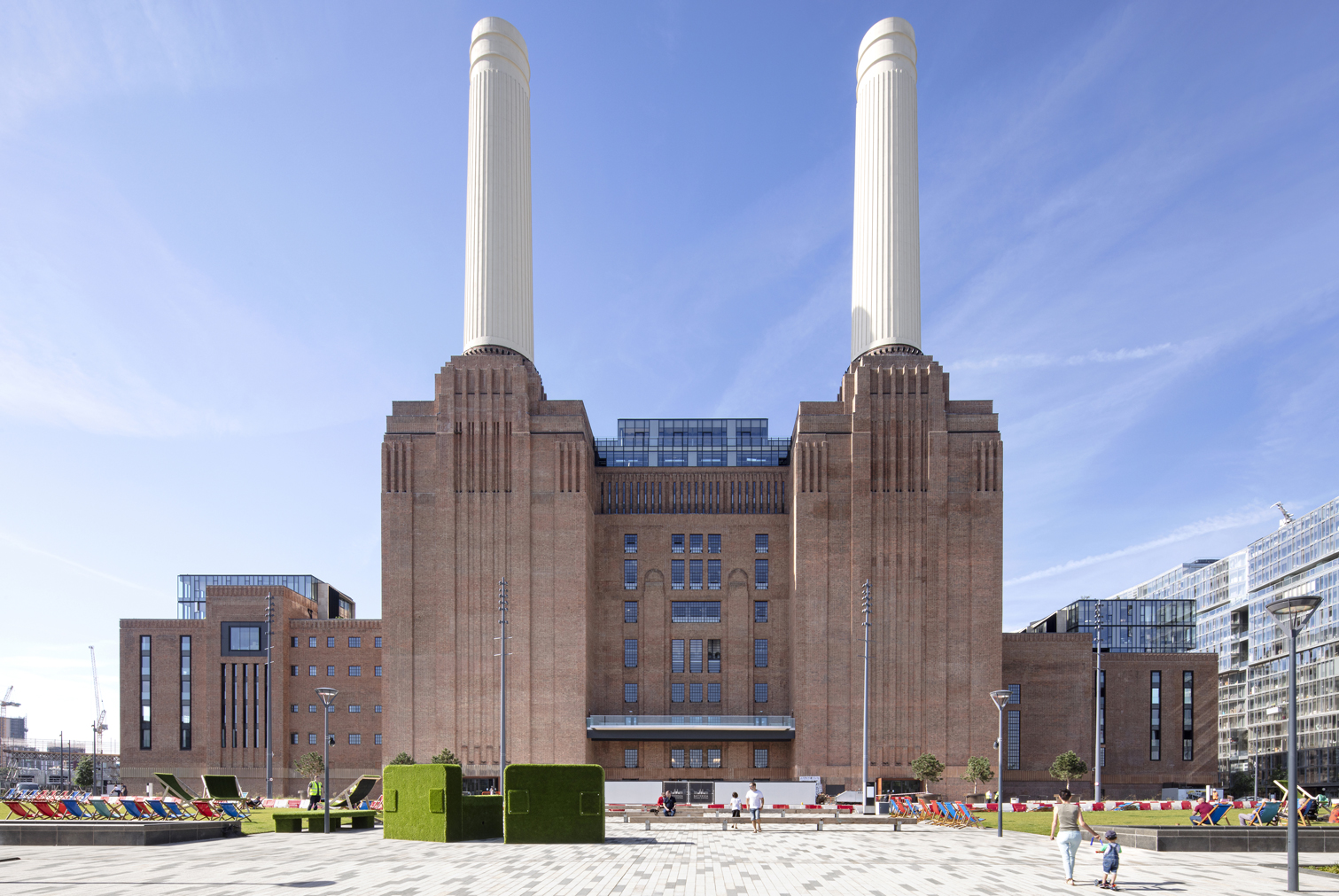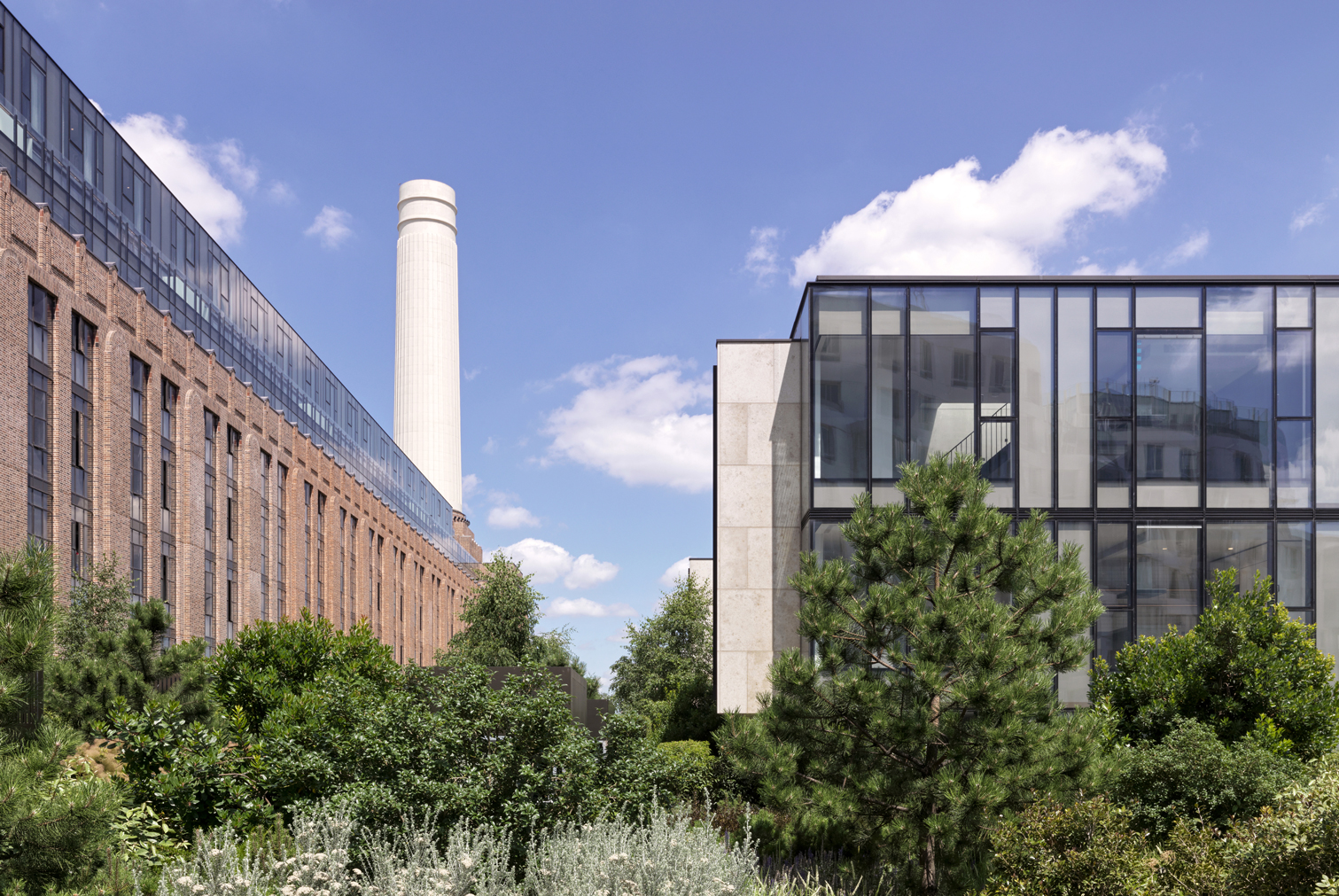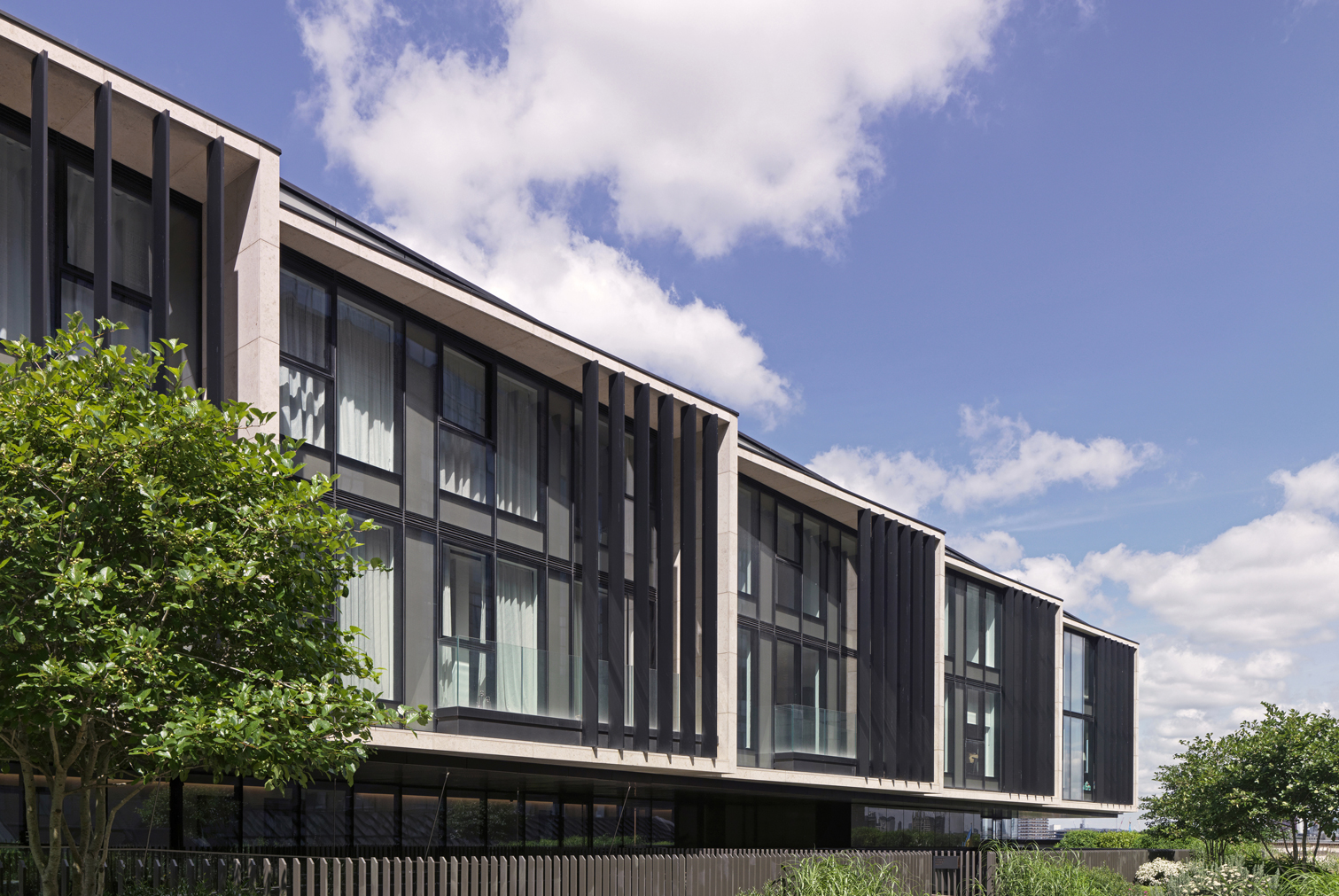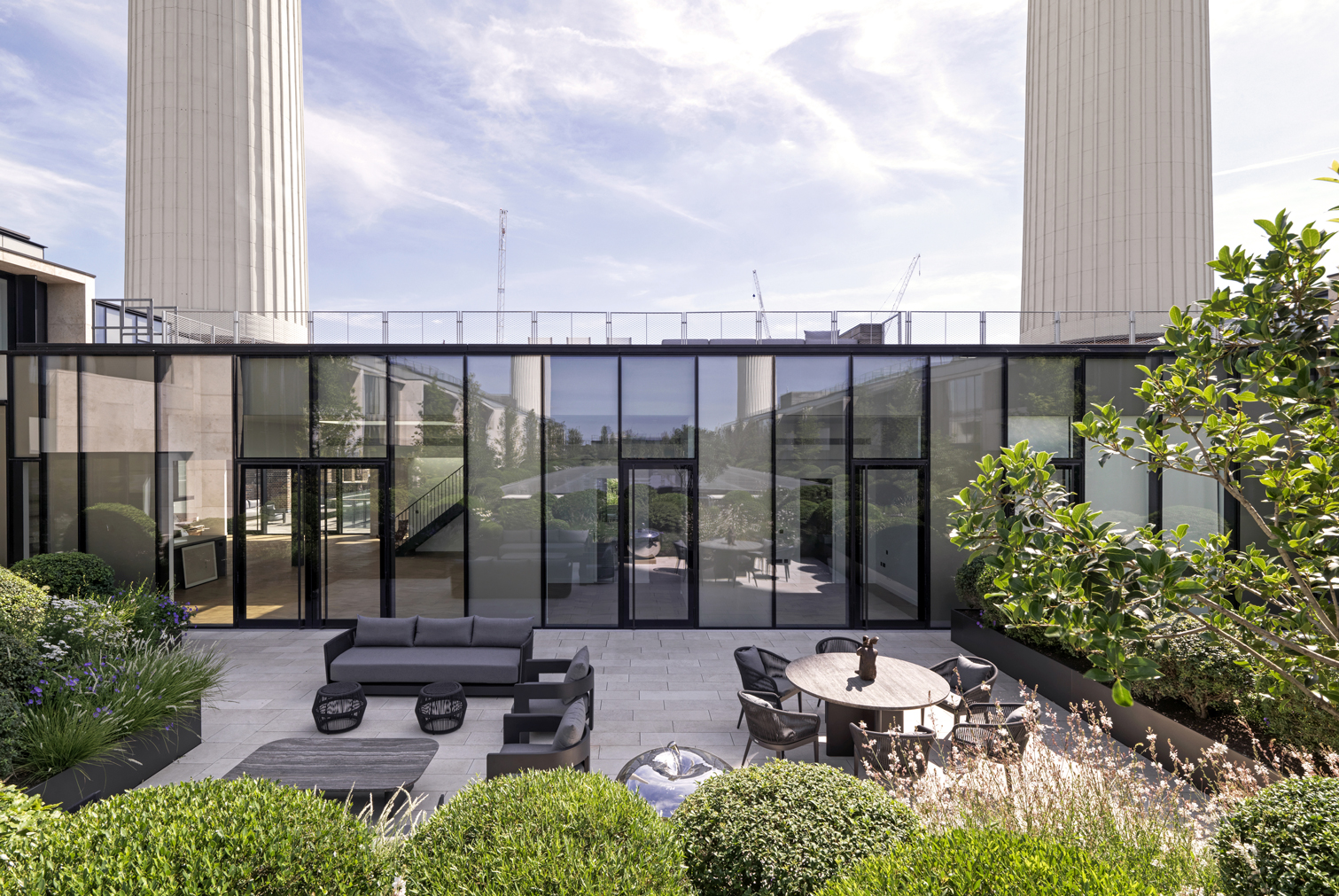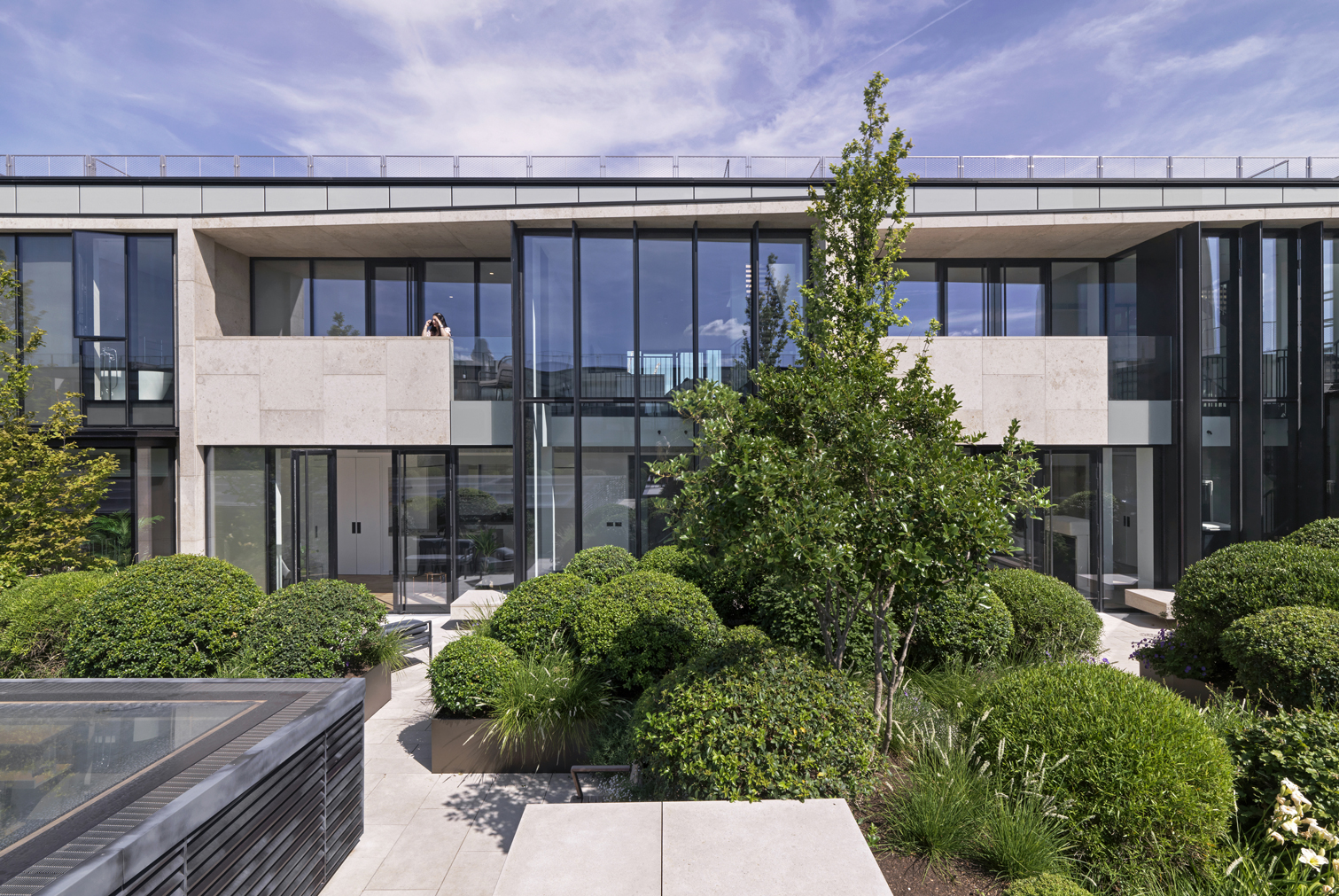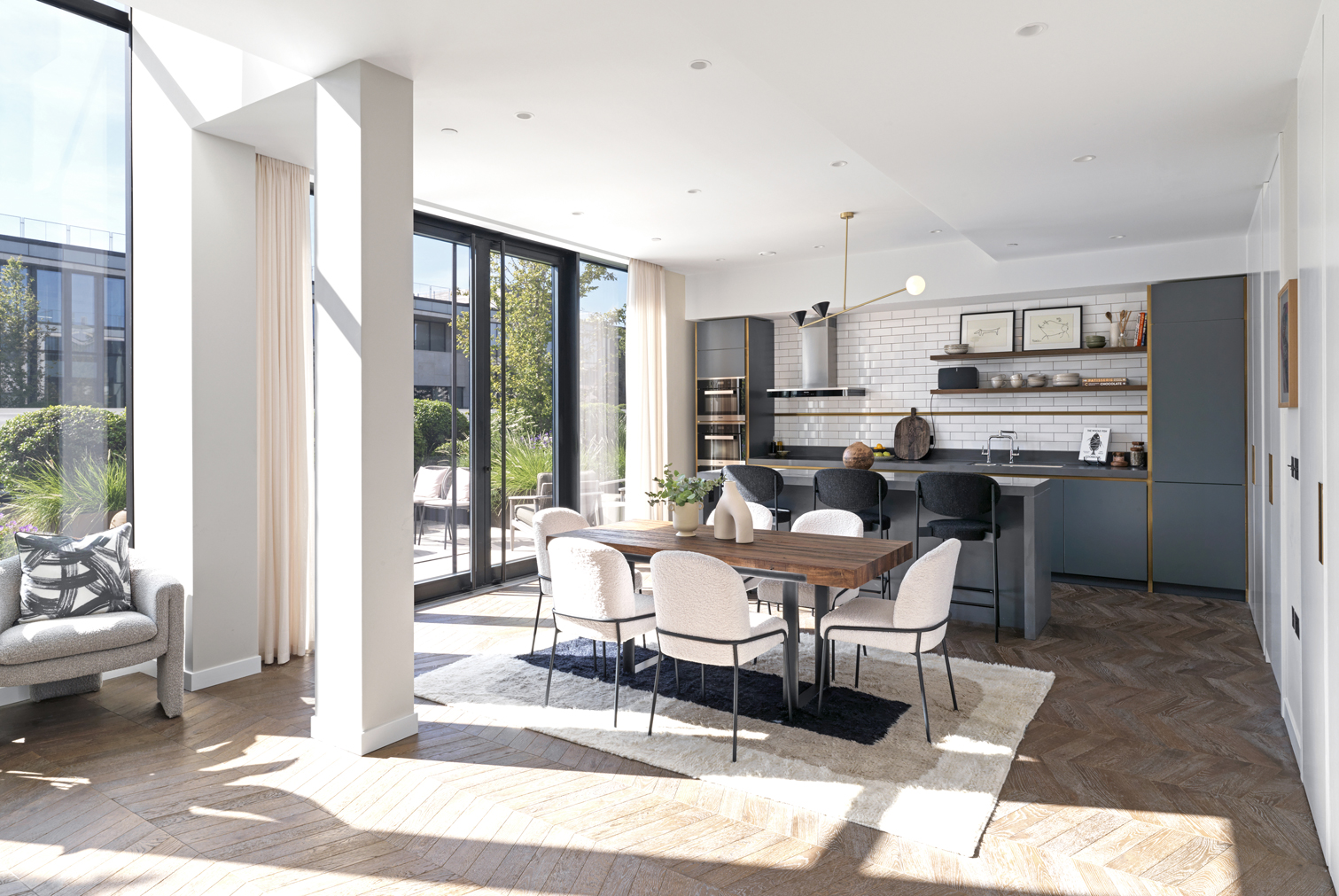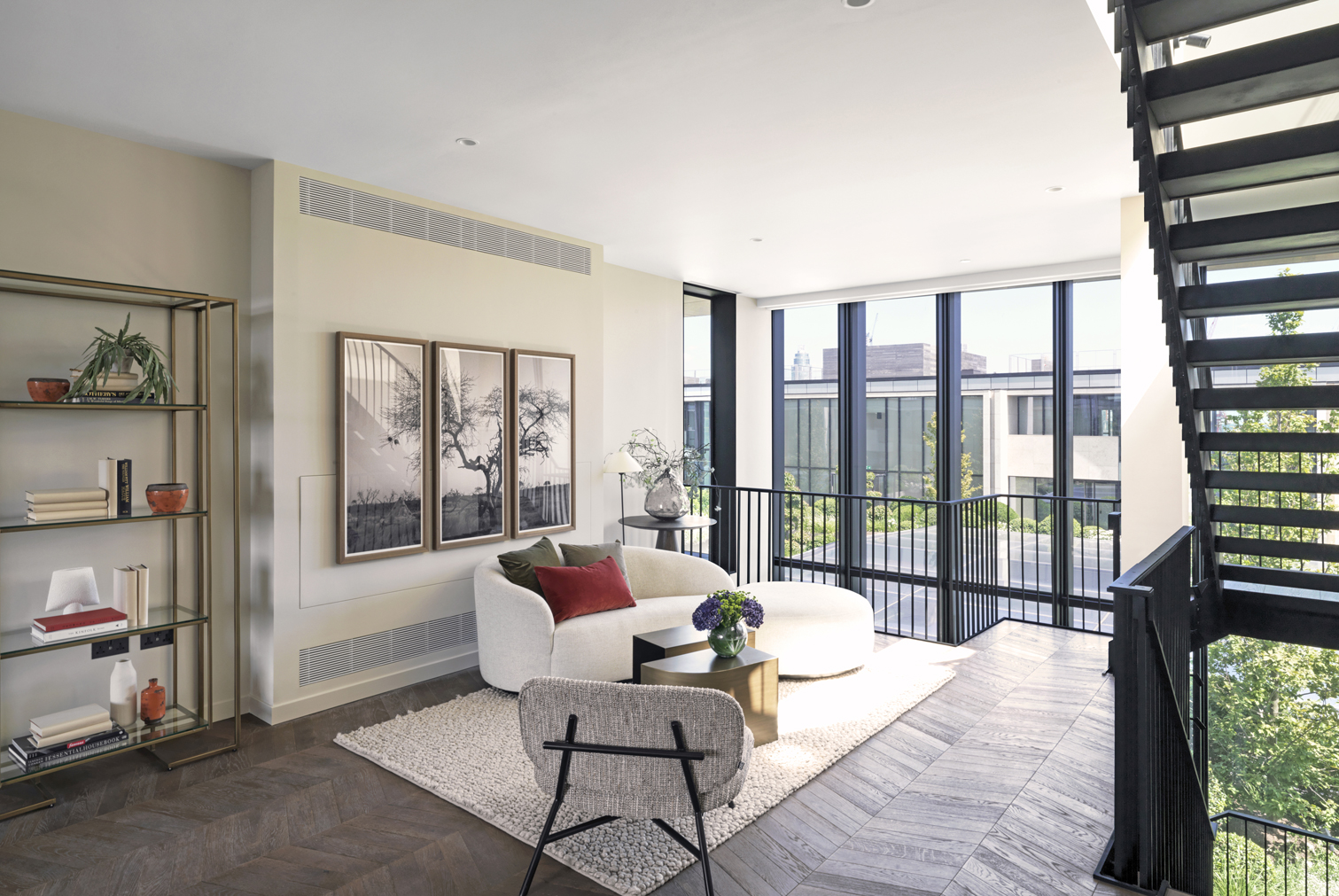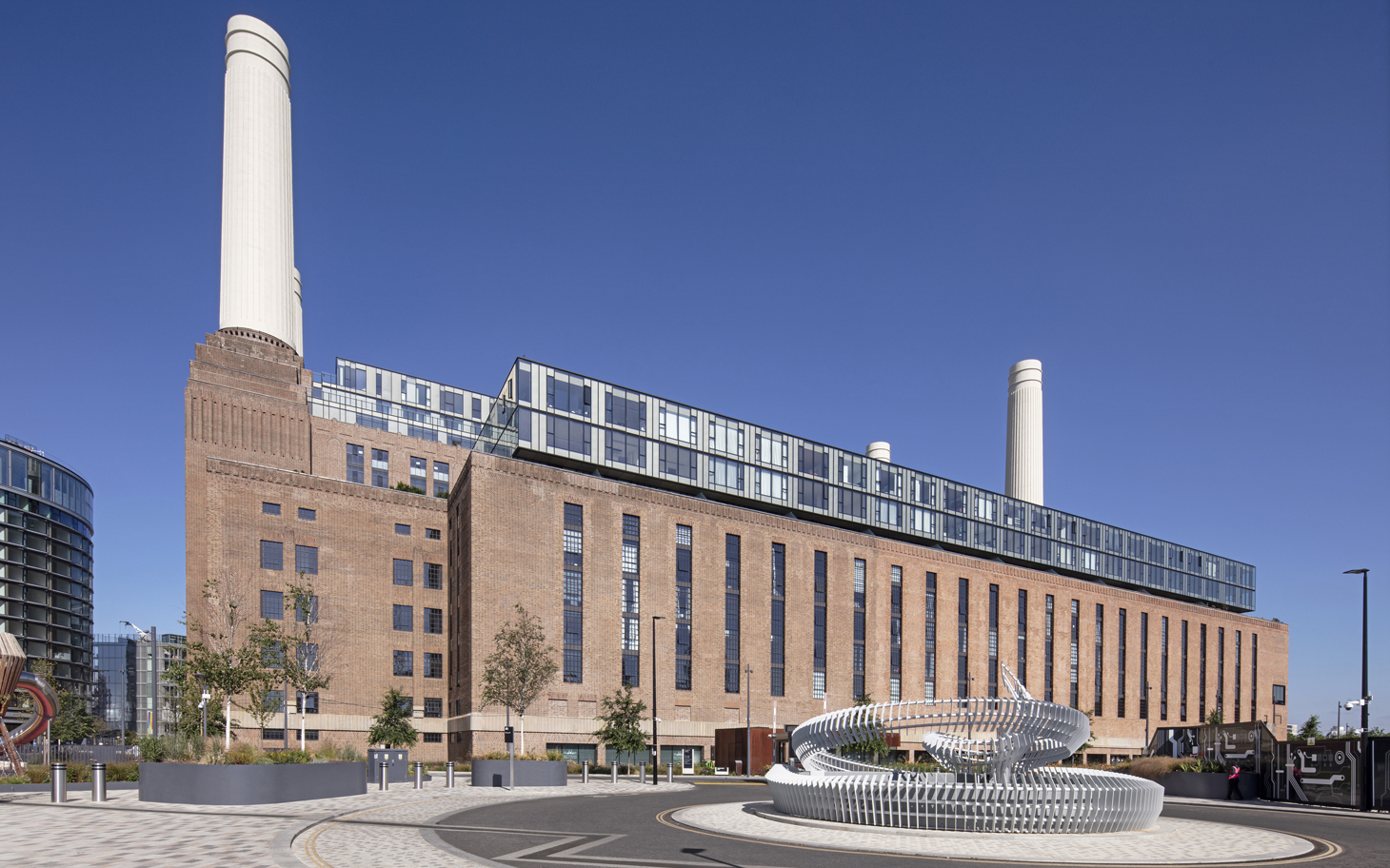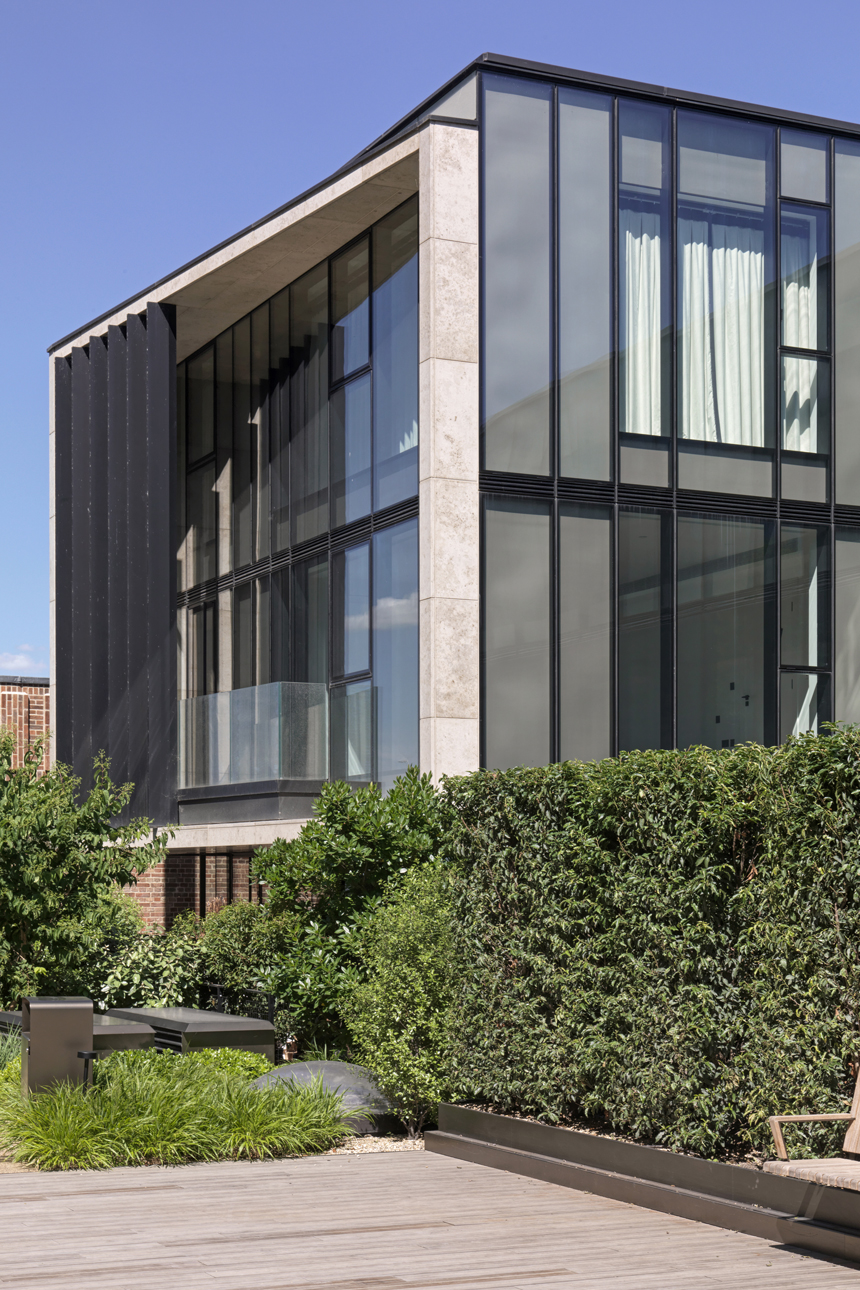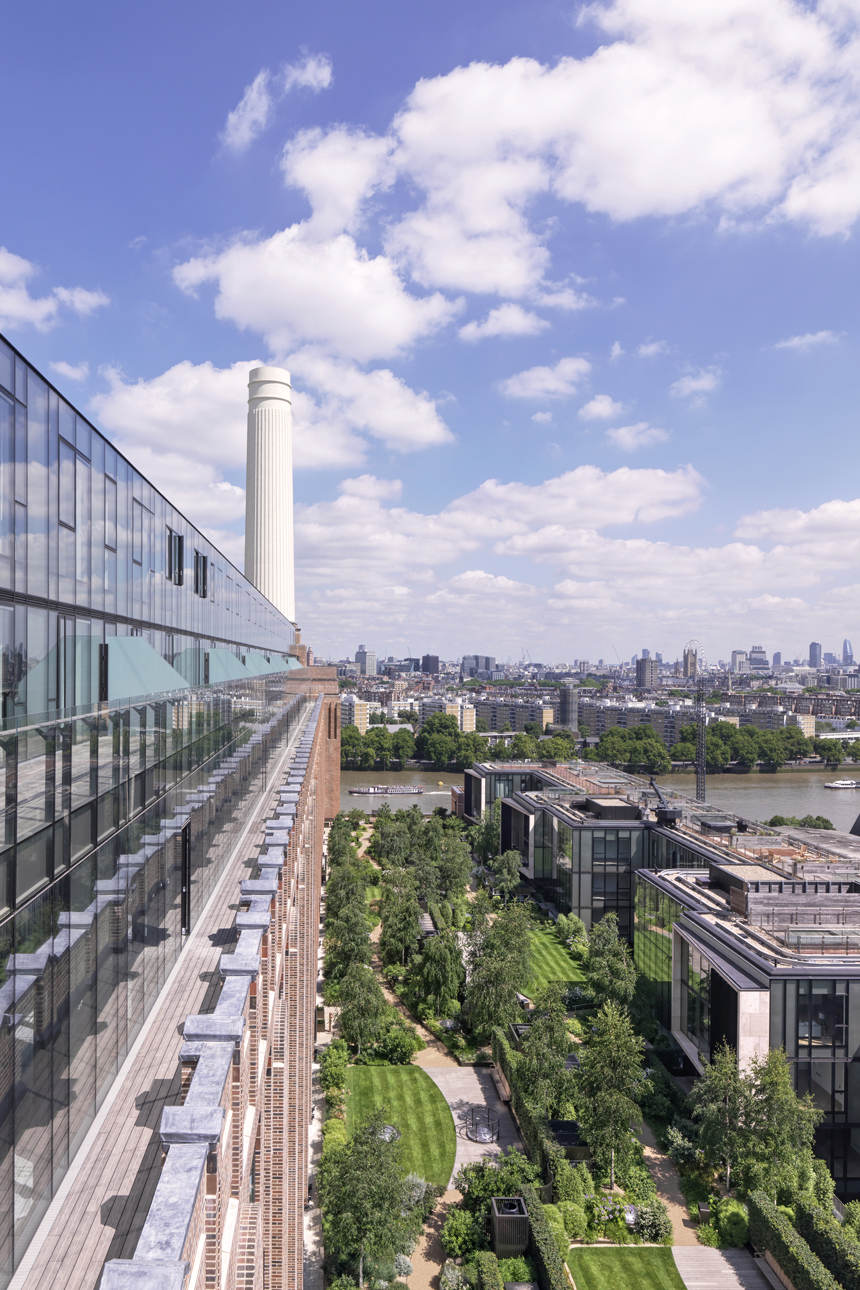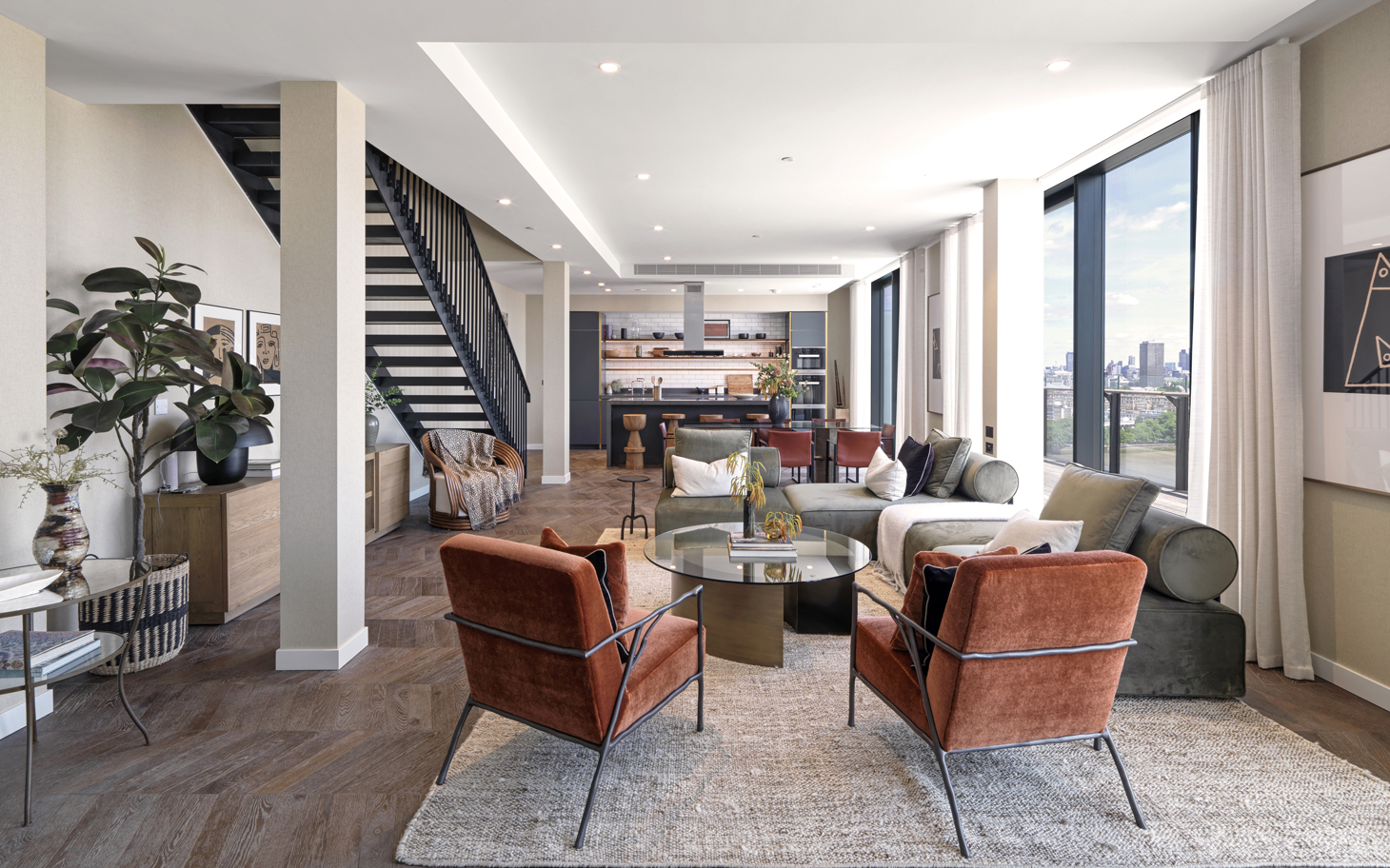It became one of the city’s best known industrial landmarks, featuring on the cover of Pink Floyd’s 1977 album Animals, on which it was photographed with the group’s inflatable pig floating between the chimneys.
The residential elements are a mixture of new build apartments and villas located on the roofs, and conversion units within the existing fabric. The accommodation occupies both Switch House West and Switch House East, on either side of the Power Station, as well as centrally on top of the Boiler House roof, framing an open landscaped garden square.Residents of the converted Switch House homes enter the building through landscaped piazzas at ground level, while the Boiler House villas are accessed via a glass lift between the structural girders of the former wash towers, the iconic chimneys visible above.
The properties have a variety of layouts and sizes depending on their location in the building, their design responding organically to this unique address. Battersea welcomed its first residents in May 2021.
Set across six floors within the upper Boiler House, the office space is attracting the cream of international creative tenants dedicated to new ways of working, open plan spaces and an industrial aesthetic. Apple are the largest tenant occupying more than 46,000m² across six floors.
An enormous atrium at the heart of the space, together with others at the north and south entrances, filters light to all office floors while allowing views of the chimneys above.


